Expected to put Hong Kong on the global map of contemporary art museums, M+ opens in two days’ time. Joyce Yip turns the spotlight on some of the favorites from the opening show, featuring 1,500 exhibits, spread out across 17,000 square meters of exhibition space.
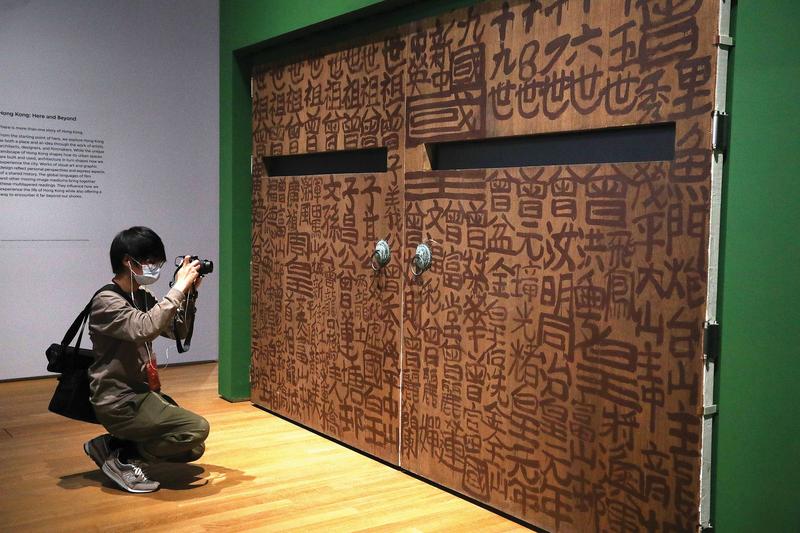 Doors bearing calligraphy by Tsang Tsou-choi serve as a gateway to the Hong Kong: Here and Beyond exhibition at M+. (CALVIN NG / CHINA DAILY)
Doors bearing calligraphy by Tsang Tsou-choi serve as a gateway to the Hong Kong: Here and Beyond exhibition at M+. (CALVIN NG / CHINA DAILY)
Contemporary artist Lee Mingwei will never forget the letter he received from an anonymous rapist asking for forgiveness from his victim. It was one of thousands that went into his installation.
Lee’s The Letter Writing Project is composed of three booths where visitors are invited to write letters of gratitude and apology. Writers can choose to seal and address their envelopes before placing them somewhere on the installation. Some of the letters are read by passers-by. The ones marked with addresses are mailed off at the end of the day, while those without any remain as part of the installation.
We have the big historical stories of contemporary Chinese art, the story of ink art that came out of Hong Kong and the story of the great architectural developments of Asian cities
Suhanya Raffel, museum director, M+
“It was two pages, beautiful penmanship: the more I read the more I realized the writer didn’t know the woman from whom he was asking for an apology,” Lee says, describing the letter received at a Whitney Museum of American Art exhibition back in the late ’90s. “The letter had all these emotions: it was sad, angry, upsetting … it was very powerful.”
This week Lee’s installation comes to Hong Kong, as part of the six inaugural exhibitions of M+ Museum of Visual Culture — one among around 1,500 works of art on show across 17,000 square meters. These exhibits are still only a fraction of the more than 56,000 pieces — spanning modern and contemporary art, design, architectural drawings and moving images from Asia and beyond — in the museum collection.
M+ is one of the main drivers of the Hong Kong government’s efforts to promote culture both inside and outside the city, being the flagship project of the HK$21.6 billion ($2.8 billion) West Kowloon Cultural District. Of that budget, HK$1.7 billion was allocated to M+ for art acquisitions alone.
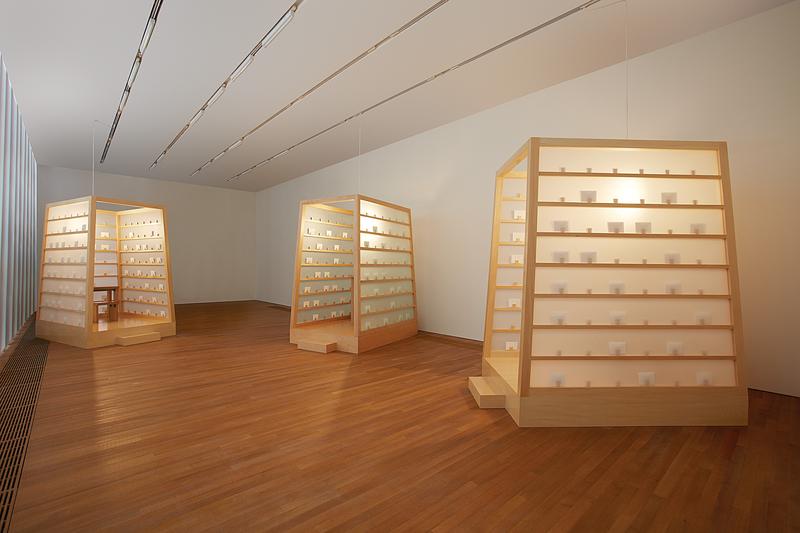 A section of Lee Mingwei’s The Letter Writing Project installation where visitors are invited to write down letters of gratitude or apology. (PHOTO PROVIDED TO CHINA DAILY)
A section of Lee Mingwei’s The Letter Writing Project installation where visitors are invited to write down letters of gratitude or apology. (PHOTO PROVIDED TO CHINA DAILY)
Masters’ pieces
“We have the big historical stories of contemporary Chinese art, the story of ink art that came out of Hong Kong, the story of the great architectural developments of Asian cities through the establishment of great urban centers and the vertical city,” says M+ Museum Director Suhanya Raffel, offering a tantalizing glimpse of what to expect at the show when the museum opens on Friday.
A gift-slash-purchase hybrid model was adopted to put the collection together. For instance, of the 1,510 pieces in the M+ Sigg Collection, representative of Chinese contemporary art from the 1970s to the present day, 97 percent were donated by the Swiss collector. The rest was acquired by the museum for a fee of $22.7 million.
 The shower booth in a stainless steel replica of Gary Chang’s apartment with movable walls, Domestic Transformer. (PHOTO PROVIDED TO CHINA DAILY)
The shower booth in a stainless steel replica of Gary Chang’s apartment with movable walls, Domestic Transformer. (PHOTO PROVIDED TO CHINA DAILY)
A striking 2-meter-wide mural on a wooden gate by the late underground street calligrapher Tsang Tsou-choi, often referred to as the King of Kowloon, welcomes visitors at the Main Gallery’s Hong Kong: Here and Beyond exhibition — marking highlights of the city’s visual culture from the 1960s onwards. Tina Pang, M+’s curator of Hong Kong Visual Culture, says she hopes kicking off the exhibition with Tsang’s work will spark conversations from the get-go.
“Was he a calligraphist, watercolorist, or was he just mentally ill?” Pang asks. She relates how Tsang would visit different neighborhoods, bring out his own ink and start drawing on any surface that caught his eye. “So his work could be seen everywhere around Hong Kong. This mural here happens to be a door of a photo studio,” Pang says of the exhibition-opening piece. “His work is very public and communicates directly with Hong Kong people.”
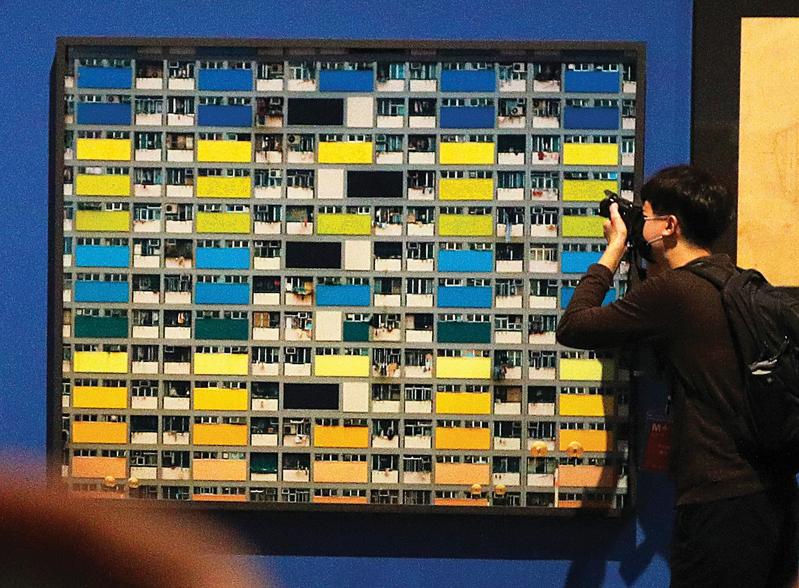 A lensman aims at a photo of Choi Hung Estate by Michael Wolf who found a theme for his art in the extraordinary density of Hong Kong’s public housing estates during a media tour on Oct 18. (CALVIN NG / CHINA DAILY)
A lensman aims at a photo of Choi Hung Estate by Michael Wolf who found a theme for his art in the extraordinary density of Hong Kong’s public housing estates during a media tour on Oct 18. (CALVIN NG / CHINA DAILY)
The exhibition in the Main Hall spans a wide range, from paintings by Hong Kong New Ink Movement leader Wucius Wong to photographs highlighting the architectural density of Choi Hung Estate by Michael Wolf to old MTR campaign posters by Stanley Wong to an architectural drawing for a posh club on the Peak that Zaha Hadid had submitted to a design competition in 1983 — the very same one that propelled her to global stardom.
Vietnamese American multimedia artist Tiffany Chung has created a collage of sketches, paintings, signage and videos depicting the lives of 150,000 Vietnamese refugees who sought asylum in Hong Kong between 1974 and 1994. Sara Tse’s Time Traveller installation is a reimagined slice of the artist’s childhood home with her late mom’s belongings — hat, quilt, gloves — strewn all around, except that the items were dipped in clay and fired at 1260 C, leaving only the white shells — symbolic of the memories Tse shared with her mother.
“Through their works, we also learn of artists’ personal histories,” Pang says. “For Sara’s piece, it was important during the installation process to document well the meaning of the different components, to understand how to take care of the work as part of the collection, and also how to display it today, and in the future.”
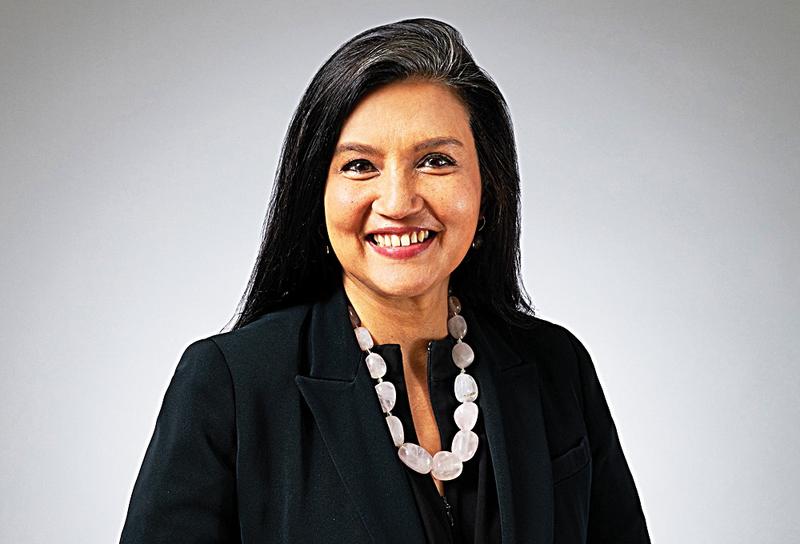 “We are very proud to frame Hong Kong artists as equal to their international counterparts,” says M+ Museum Director Suhanya Raffel. (PHOTO PROVIDED TO CHINA DAILY)
“We are very proud to frame Hong Kong artists as equal to their international counterparts,” says M+ Museum Director Suhanya Raffel. (PHOTO PROVIDED TO CHINA DAILY)
While art aficionados might recognize some of the exhibits — Tse’s ceramics, for example — from previous shows in Hong Kong, Pang says her curation is focused on contextual placement. For instance, blown-up archival images from the Expo ’70 world’s fair held in Osaka, Japan are juxtaposed with master painter Lui Shou-kwan’s ink painting selected for exhibition at that event. Michael Wolf’s photographic interpretation of Hong Kong’s public housing, meanwhile, is parked next to video installations featuring film clips and games in which the city figures prominently.
“Each institution collects for different reasons,” Pang says. “At M+, we consider the strength of the work itself. It is important that we try to get good examples of works by individual artists and makers, but we also consider how works relate to other collection areas — whether they have an interdisciplinary aspect or whether they shed light on other histories that we have only represented in one way.”
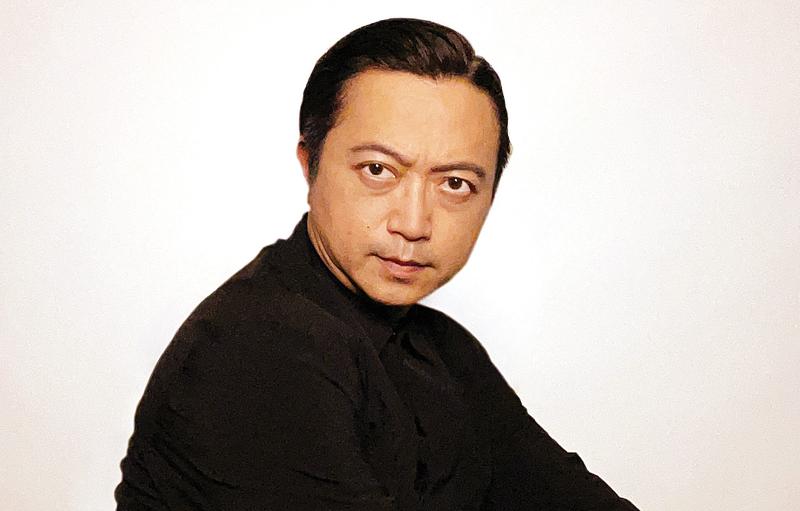 Artist-architect Gary Chang says the stainless steel model of his Eastern District apartment in M+ shows how art is inseparable from life. (PHOTO PROVIDED TO CHINA DAILY)
Artist-architect Gary Chang says the stainless steel model of his Eastern District apartment in M+ shows how art is inseparable from life. (PHOTO PROVIDED TO CHINA DAILY)
Making its museum debut is Gary Chang’s Domestic Transformer, a replica of the artist-architect’s Eastern District home on a one-to-one scale. The 330 square feet dummy apartment built entirely in stainless steel contains a bathtub, ample storage space and bar table, much of it hidden between movable walls.
“Aside from questioning what is public and what is private, my exhibition is an example of how art is inseparable from life and how design can elevate the quality of our lives,” Chang says. “Though my intention was just to make my home ‘bigger’ within my limits, the design shows the world certain urban conditions that a lot of cities, especially in Asia, are facing, and all of these relate to visual culture. Nothing is truly what it seems, and everything is layered with meaning.”
“Too bad the museum didn’t decide to put me on display too,” he jokes.
The M+ Sigg Collection, according to the museum, is the largest and most comprehensive collection of contemporary Chinese art in the world. Selections from this collection on show on the second floor include painting, prints, sculpture, performance, photography and digital art. The period covered begins with the cultural revolution (1966-76), ending in 2012, while drawing attention to the historical milestones in between — the emergence of the No Name Group of artists, often regarded as the country’s founding fathers of Chinese contemporary art, in the 1970s for example.
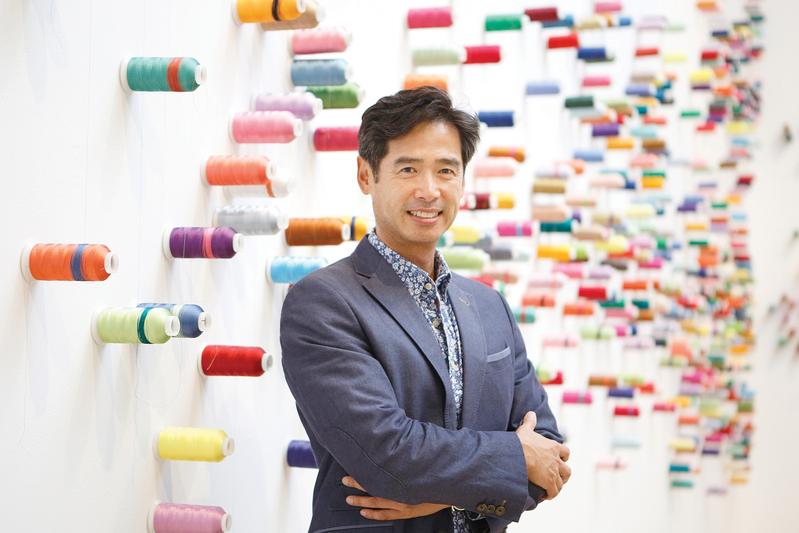 Lee Mingwei’s The Letter Writing Project comprises three booths where viewers can leave their letters of gratitude or apology. (PHOTO PROVIDED TO CHINA DAILY)
Lee Mingwei’s The Letter Writing Project comprises three booths where viewers can leave their letters of gratitude or apology. (PHOTO PROVIDED TO CHINA DAILY)
This is where the iconic works by heavyweights of contemporary Chinese art could be found: Zhang Xiaogang’s Bloodline – Big Family No.17; Wang Keping’s Chain; Zhang Wei’s EXPE10 and many more.
Behind the collection is Uli Sigg, a businessman and art collector who served as Swiss ambassador to China, the Democratic People’s Republic of Korea, and Mongolia and dedicated much of his spare hours to collecting contemporary Chinese art. He shares curator Pang’s notion that presenting art within a sociohistorical context and in dialogue with other works of art might be a better idea than lining museum walls with masterpieces.
“Institutional collecting seeks to bring together works with the vision of webbing a full context of a subject matter and through their combination to create additional meaning by enabling works themselves to charge each other up,” Sigg writes in an introductory note to aid the viewing of the pieces acquired by him in a museum set-up. “Just as much as identifying the so-called masterpieces, this is about finding the pieces that may go unattended or are ascribed to artists considered second tier, a categorization that is itself subject to change over time, in order to fill the perception gaps, narrate the underlying subtexts and open up further space for the imagination of the viewer.”
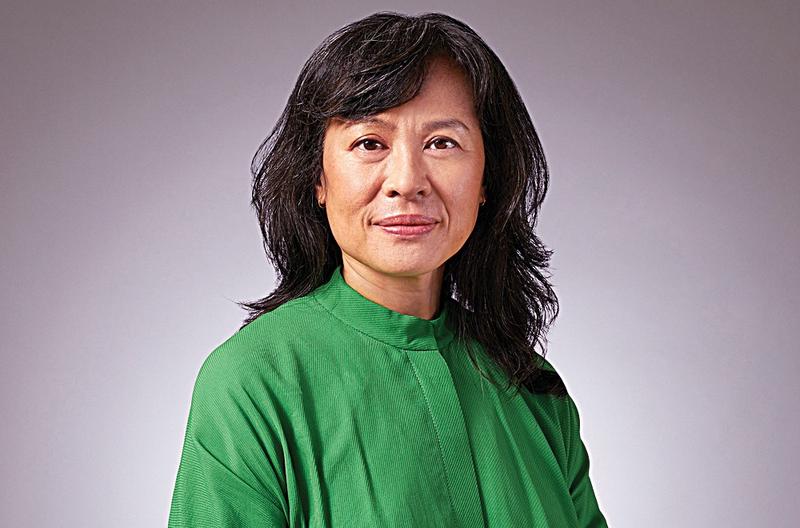 “At M+ we consider whether works have an interdisciplinary aspect or shed light on other histories,” says Tina Pang, curator of the Hong Kong Visual Culture. (PHOTO PROVIDED TO CHINA DAILY)
“At M+ we consider whether works have an interdisciplinary aspect or shed light on other histories,” says Tina Pang, curator of the Hong Kong Visual Culture. (PHOTO PROVIDED TO CHINA DAILY)
View from the East
The Letter Writing Project figures in the Individuals, Networks, Expressions exhibition. Put together by Pauline J. Yao, lead curator of Visual Art at M+, the space explores identities, histories of migration and perspectives via an array of materials from the 1950s onwards and sourced from around the world.
Among the highlights is Patty Chang’s Fountain, a video capturing the dichotomies between one’s interior life and exterior appearances. Kapan iki, a five-piece sculpture made of steel rebar, by the London-based Palestinian artist, Mona Hatoum, explores the idea of confinement while bringing up issues of power, exile and migration in the process.
“It is a work that speaks to precariousness, entrapment and the fragile balancing act of human survival,” Yao says. “The work also carries close resonances with Hatoum’s own cross-cultural, diasporic background and that was an important reason behind including it in the show.”
Lee believes The Letter Writing Project might have made it to the opening exhibition for similar reasons — because he brings a wider, Asian perspective on globally-shared emotions of forgiveness and gratitude to the table.
“A lot of Asians who have grown up in the West still have very strong connections to this side of the world,” says Lee, who has lived in many cultures in both the East and the West. “It’s precisely my mixed background that has birthed my work. It is a celebration of Asian artists who have a unique, powerful and poetic voice — one that is as powerful as that of the West.”
Indeed, M+ is about celebrating the East, but within a global context. As Raffel points out, “We are very proud to frame Hong Kong artists and makers of visual culture as equal to their international counterparts, and this brings unique perspectives and different points of view.”


